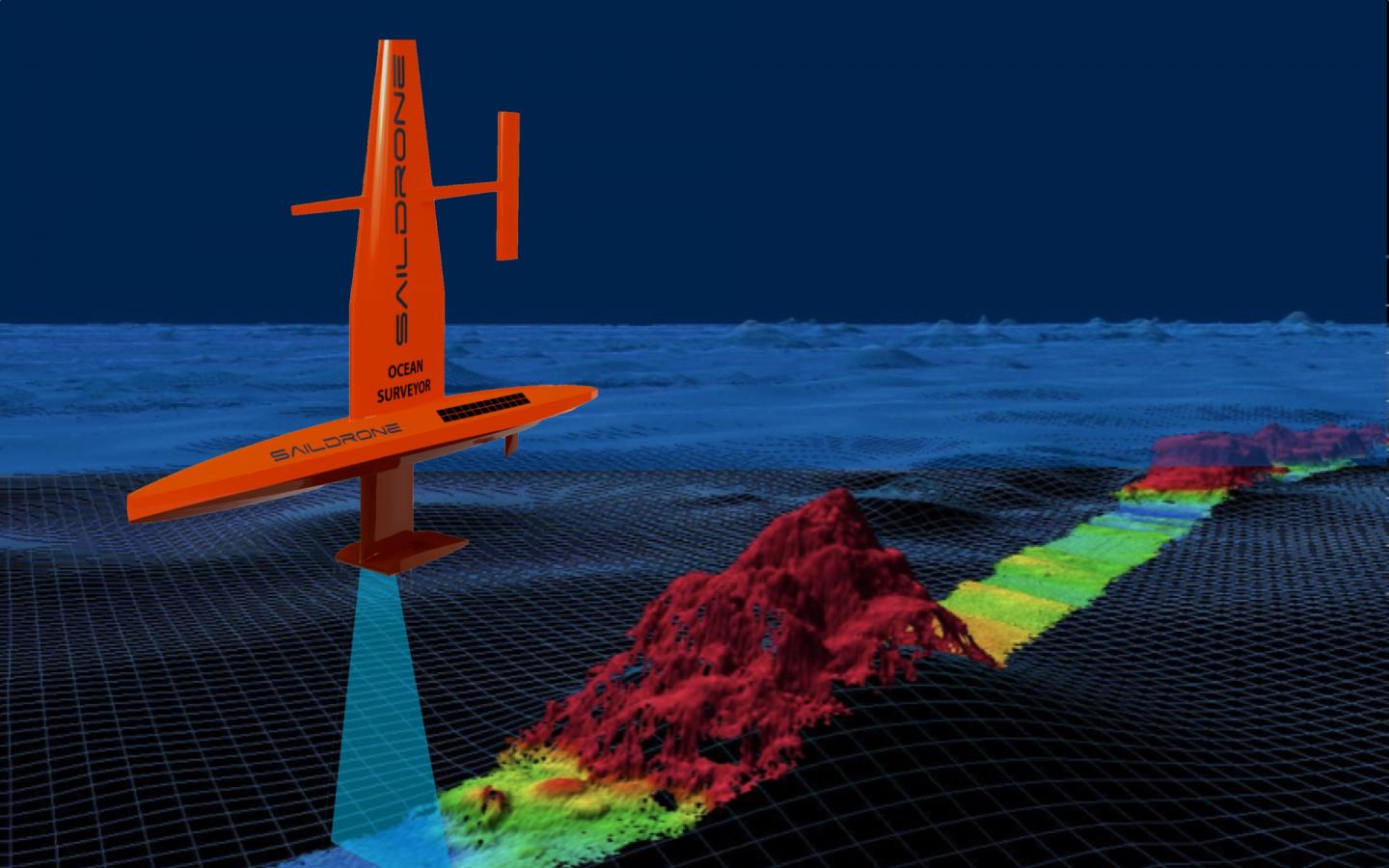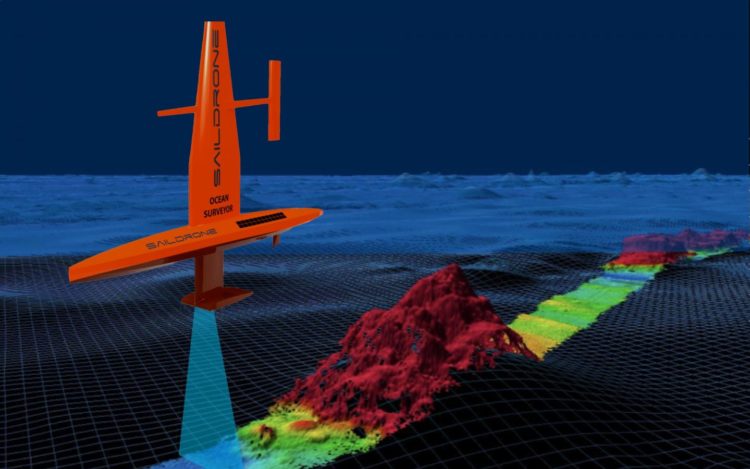
Credit: Credit: Saildrone, Inc.
DURHAM, N.H.– Researchers at the University of New Hampshire have been awarded a three-year grant from the National Oceanic and Atmospheric Administration (NOAA) in partnership with Saildrone, Inc. of Alameda, CA, and the Monterey Bay Aquarium Research Institute (MBARI) to develop data quality tools for a new unmanned wind-powered sailboat-like vehicle capable of long-duration missions to collect vital ocean mapping information.
“This innovative partnership will produce a much more efficient and cost-effective way to collect needed data for mapping the ocean and monitoring the marine environment,” said Larry Mayer, director at UNH’s Center for Coastal and Ocean Mapping (CCOM), and co-head of Seabed 2030’s Arctic and North Pacific Regional Data Center. “The data we collect will play a critical role in safety of navigation, tsunami and storm surge predictions, ecosystem and other environmental studies, and modeling climate change.”
The Saildrone Surveyor, currently under development and scheduled to be deployed in spring 2020, will be a 72-foot unmanned surface vehicle (USV) capable of going out to sea for six to 12 months. Working with UNH and Kongsberg, which specializes in advanced maritine techonologies, Saildrone will install three state-of-the-art sonar systems on the USV enabling detailed mapping data of the seafloor and water column to be transmitted back to shore, some in real time. UNH will analyze and evaluate the data quality and will lead the development of autonomous data quality monitoring tools to identify targets of interest.
“We are very pleased to be working with the University of New Hampshire and the Monterey Bay Aquarium Research Institute to further ocean characterization research using eDNA and achieve global bathymetry goals,” said Richard Jenkins, founder and CEO of Saildrone. “Over the past five years, Saildrone USV’s have performed extensive missions in the Arctic, Antarctic, and Pacific and Atlantic oceans, proving it to be a capable and effective vehicle for collecting data in the most extreme environments. The larger Saildrone Surveyor is an exciting evolution that leverages all our expertise and experience to create an extremely capable platform to further explore our oceans and share that data with projects such as Seabed 2030.”
The Saildrone Surveyor will be equipped with a complete suite of environmental sensors to support studies looking at harmful algal blooms, microbial ecology, water quality, and environmental DNA (eDNA) indicative of invasive species and larger animals.
Even though the world’s oceans are widely traveled, fished and explored, experts say only roughly 15 percent of the Earth’s seafloor has been mapped with high-resolution imaging. Mayer is part of the international consortium known as Seabed 2030, which hopes to accomplish that goal by the year 2030.
The new Saildrone Surveyor will be piloted remotely rather than operated fully autonomously enabling responsive mission adaption whenever sensors indicate an area of interest. Data will be relayed in real time to a shore-based operator via broadband satellite communication.
###
Funding was provided by NOAA’s Office of Ocean Exploration and Research (OER) and is part of the National Oceanographic Partnership Program (NOPP) which facilitates partnerships between federal agencies, academia, and industry to advance ocean science research and education. Since 1997, NOPP has funded over 200 projects that address our nation’s economic development, national security, quality of life and science education.
Saildrone, Inc. is a provider of oceanographic and atmospheric data, collected by a fleet of wind and solar-powered unmanned surface vehicles, known as saildrones. Each vehicle can stay at sea for up to 12 months, transmitting real-time data before returning to shore for servicing and sensor calibration. Saildrone has deployed vehicles to the most remote corners of the planet, in locations ranging from 75°N, on the ice edge in the U.S. Arctic, to 62°S in the Southern Ocean. Using clean renewable power, saildrones provide access to the world’s oceans at a fraction of the cost of traditional ship-based methods.
The University of New Hampshire inspires innovation and transforms lives in our state, nation and world. More than 16,000 students from all 50 states and 71 countries engage with an award-winning faculty in top-ranked programs in business, engineering, law, health and human services, liberal arts and the sciences across more than 200 programs of study. As one of the nation’s highest-performing research universities, UNH partners with NASA, NOAA, NSF and NIH, and receives more than $110 million in competitive external funding every year to further explore and define the frontiers of land, sea and space.
Image for Download
https:/
Composite image of the Saildrone Surveyor, a partnership project with the University of New Hampshire, Saildrone, Inc. of Alameda, CA, and the Monterey Bay Aquarium Research Institute (MBARI) to develop data quality tools for the new unmanned wind-powered sailboat-like vehicle capable of long-duration missions to collect vital ocean mapping information.
Credit: Saildrone, Inc.
Media Contact
Robbin Ray
[email protected]
603-862-4864
Original Source
https:/





